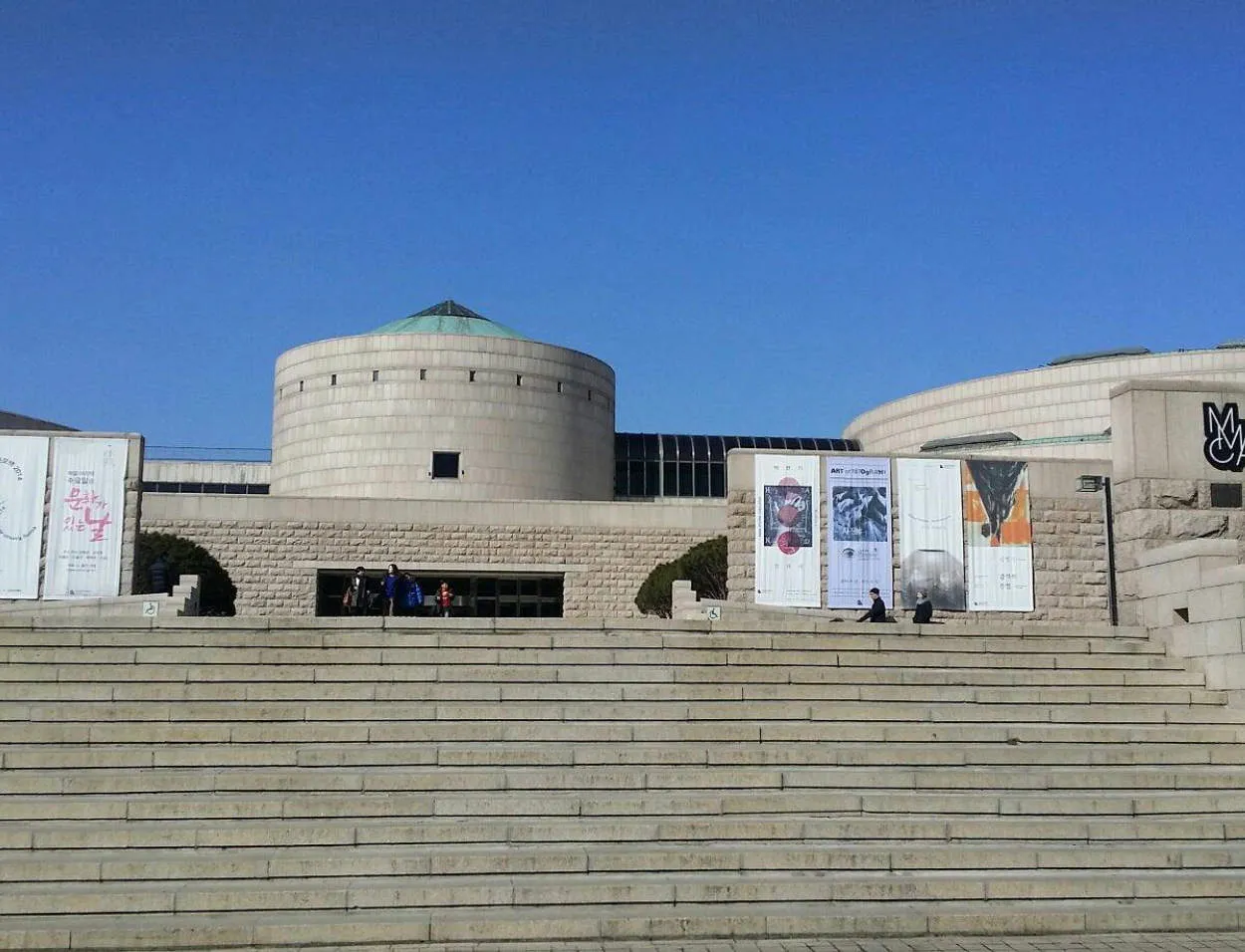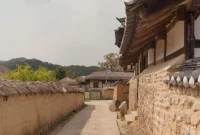Welcome to the vibrant art scene in Korea, where museums and galleries offer a glimpse into the country’s rich cultural heritage. From ancient artifacts to contemporary masterpieces, this article explores the diverse world of Korean art and the venues that showcase it.
A Glimpse into the Modern Korean Art Landscape
In recent years, the Korean art scene has gained international recognition and acclaim, making a significant impact on the global art landscape. With its unique blend of tradition and contemporary influences, Korean art offers a captivating glimpse into the country’s rich cultural heritage and vibrant modern society.
One of the most prominent aspects of the modern Korean art landscape is the thriving museum scene. Seoul, the capital city, boasts numerous world-class museums that showcase a diverse range of artistic styles and mediums. From the iconic National Museum of Korea, which houses a vast collection spanning more than five thousand years of history, to the modern and innovative Leeum, Samsung Museum of Art, visitors can explore the depth and breadth of Korean artistic expression.
In addition to museums, galleries play a crucial role in shaping the Korean art scene. Seoul’s art districts, such as Samcheong-dong and Insadong, are renowned for their concentration of galleries showcasing both established and emerging artists. These galleries provide a platform for local talents to showcase their works and offer art enthusiasts the opportunity to discover exciting new voices in the Korean art world.
Moreover, Korean art reflects the dynamic relationship between tradition and modernity. Artists often draw inspiration from traditional Korean art forms, such as ink painting and ceramics, and incorporate contemporary elements, creating a unique fusion of the old and the new. This synthesis of tradition and innovation has become a defining characteristic of the modern Korean art landscape.
From vibrant street art to experimental installations, the Korean art scene continues to evolve and push boundaries. Artists are unafraid to address social and political issues, contributing to an art scene that is thought-provoking and relevant. Whether it’s through traditional mediums or cutting-edge installations, Korean artists are forging their own path and leaving an indelible mark on the global art stage.
Discovering Hidden Artistic Gems in Seoul’s Galleries
When it comes to the art scene, Seoul is undoubtedly a city that offers a vibrant and diverse range of galleries and museums. While internationally renowned institutions, such as the National Museum of Modern and Contemporary Art, are top highlights for art enthusiasts, there are also numerous hidden artistic gems waiting to be discovered. These lesser-known galleries provide a unique and intimate experience for those seeking to delve deeper into Korea’s flourishing art scene.
1. Gallery Hyundai
Located in the vibrant district of Jongno-gu, Gallery Hyundai is a must-visit for art lovers. Established in 1970, it is one of the oldest galleries in Seoul. The gallery showcases a curated collection of contemporary art, representing both Korean and international artists. With its innovative exhibitions and thought-provoking installations, Gallery Hyundai continues to push the boundaries of art.
2. Hakgojae Gallery
Tucked away in the artistic neighborhood of Samcheong-dong, Hakgojae Gallery stands out as a hidden gem. This three-story gallery features a mix of traditional and contemporary art, blending the old with the new. With its charming architecture and intimate spaces, Hakgojae Gallery provides a serene atmosphere for visitors to appreciate the beauty of Korean art.
3. Kukje Gallery
Located in the heart of Seoul, Kukje Gallery is known for its exceptional collection of modern and contemporary art. The gallery exhibits works by renowned Korean and international artists, making it a prominent player in the art world. Kukje Gallery’s commitment to showcasing groundbreaking art forms and fostering artistic dialogue has solidified its position as a top destination for art enthusiasts.
4. Arario Gallery
Arario Gallery, with its multiple branches across Seoul, offers a dynamic space for contemporary art exhibitions and projects. The gallery showcases a diverse range of artworks, ranging from paintings and sculptures to multimedia installations and performances. Arario Gallery’s innovative approach to presenting art challenges traditional boundaries and provides a platform for emerging artists to shine.
Exploring the lesser-known galleries in Seoul can uncover unexpected surprises and introduce you to the talented artists shaping Korea’s art scene. From traditional to contemporary art, Seoul’s galleries offer a rich tapestry of artistic expression that shouldn’t be missed.
Korean Traditional Art: A Timeless Masterpiece
Korean traditional art is a true testament to the rich cultural heritage of the country. Spanning centuries, it has stood the test of time and continues to captivate audiences worldwide. From painting and ceramics to calligraphy and music, Korean traditional art offers a glimpse into the country’s deep-rooted artistic traditions and aesthetic sensibilities.
One of the most prominent forms of traditional art in Korea is hansik or Korean painting. Known for its meticulous brushwork and vibrant colors, Korean painting often depicts nature, landscapes, and everyday life scenes. The emphasis on capturing the essence of the subject matter and conveying emotions sets Korean painting apart.
Another noteworthy form of traditional art is moon jars, which are iconic ceramic vessels. Moon jars, with their simple yet elegant shape, represent the perfect harmony between humans and nature. These beautifully crafted jars have become symbols of Korean aesthetics and are highly sought after by collectors and art enthusiasts.
In addition to painting and ceramics, Korean calligraphy is also an integral part of the traditional art scene. Hangeul, the Korean alphabet, is transformed into intricate brushstrokes that reflect the writer’s personality and creativity. Calligraphy has long been revered as a form of artistic expression in Korea and is cherished for its beauty and meaning.
To further delve into the world of Korean traditional art, a visit to the museums and galleries in Korea is a must. The National Museum of Korea in Seoul showcases a wide range of artifacts, including paintings, ceramics, and sculptures, providing visitors with a comprehensive understanding of Korean art history. Other notable institutions such as the Leeum, Samsung Museum of Art and the Gansong Art Museum also offer remarkable collections of traditional and contemporary Korean art.
The art scene in Korea is a vibrant and thriving one. With a rich tapestry of traditional art forms, it continues to evolve and embrace modern influences. Whether you are an art enthusiast or simply looking to explore the cultural heritage of Korea, the museums and galleries in the country offer a remarkable journey into the world of Korean traditional art.
Conclusion
In conclusion, the art scene in Korea is vibrant and diverse, with an impressive range of museums and galleries showcasing both traditional and contemporary art. From world-renowned institutions like the National Museum of Modern and Contemporary Art to smaller, independent galleries scattered throughout the country, there is something for every art lover to explore and appreciate. Whether you’re interested in ancient Korean art or interested in exploring the emerging talents of contemporary Korean artists, the art scene in Korea offers a rich and immersive experience.




